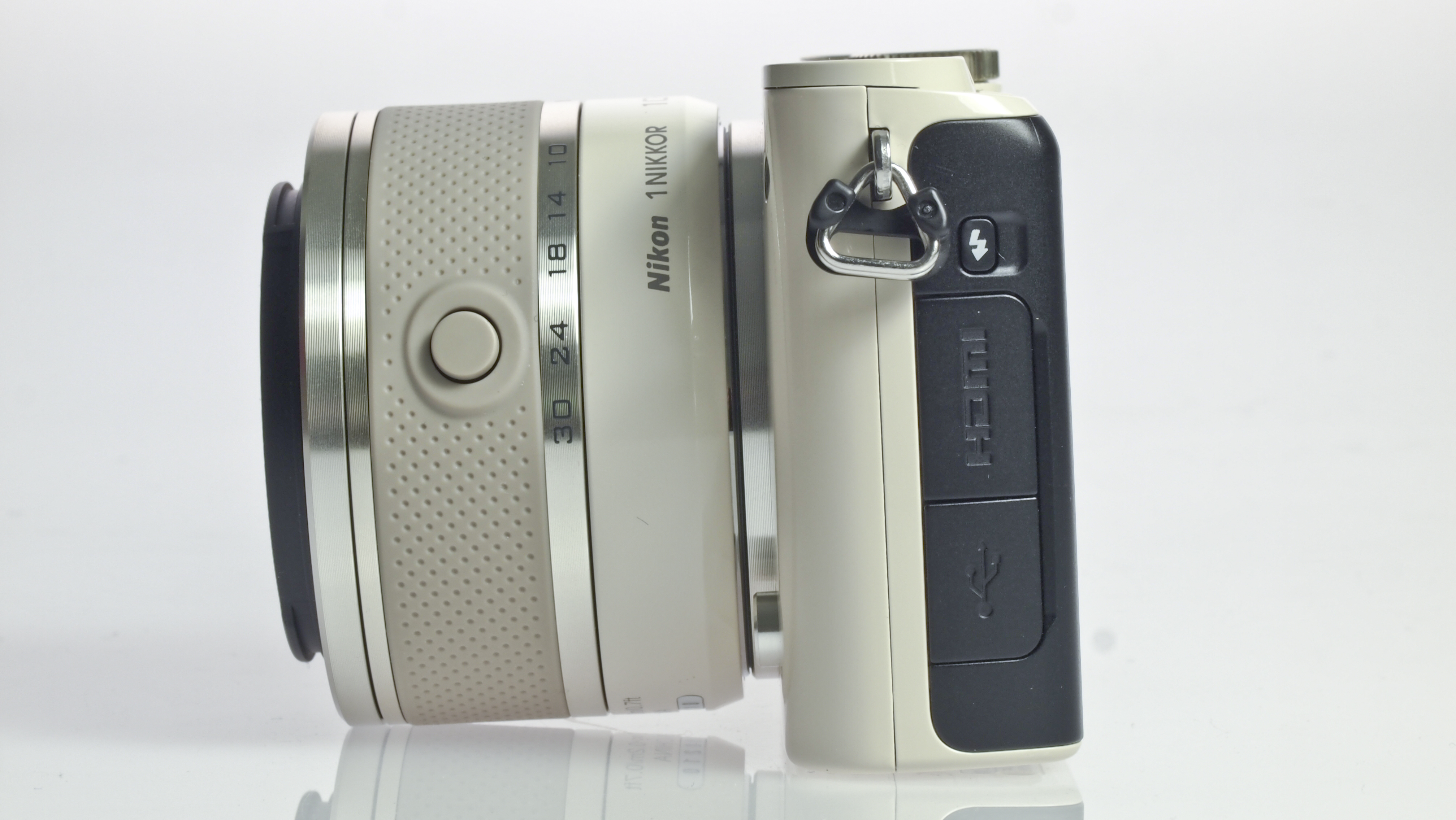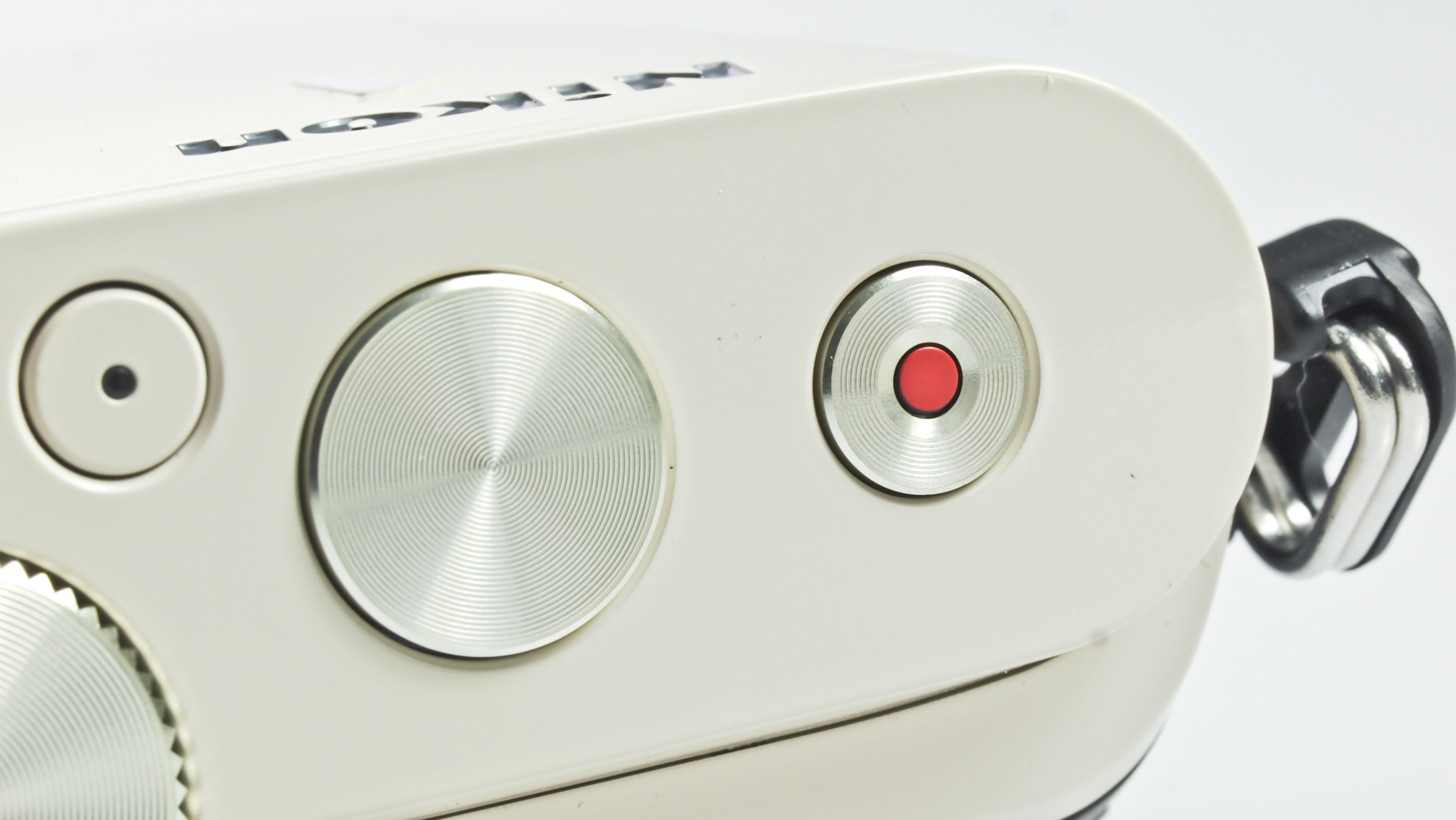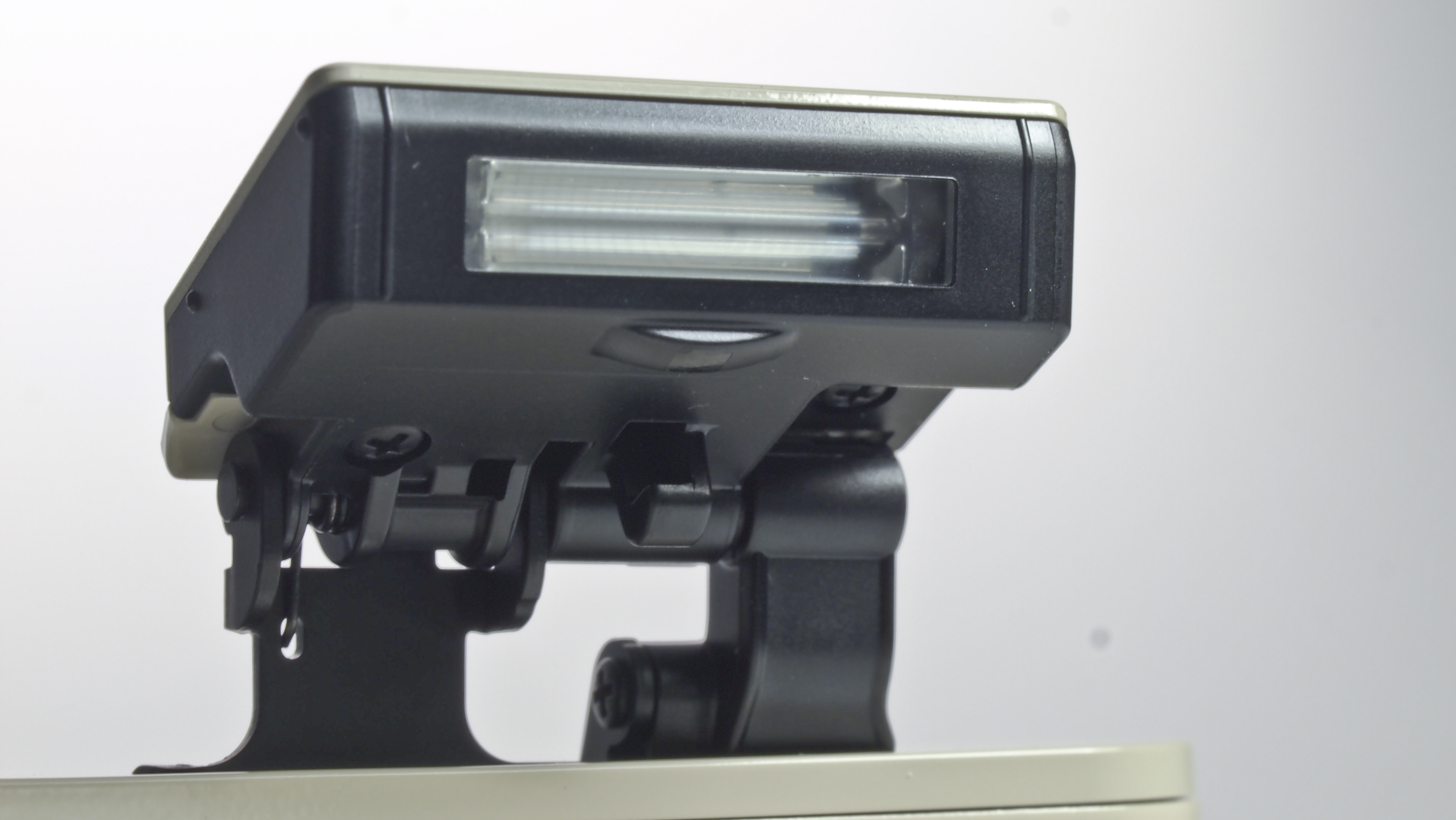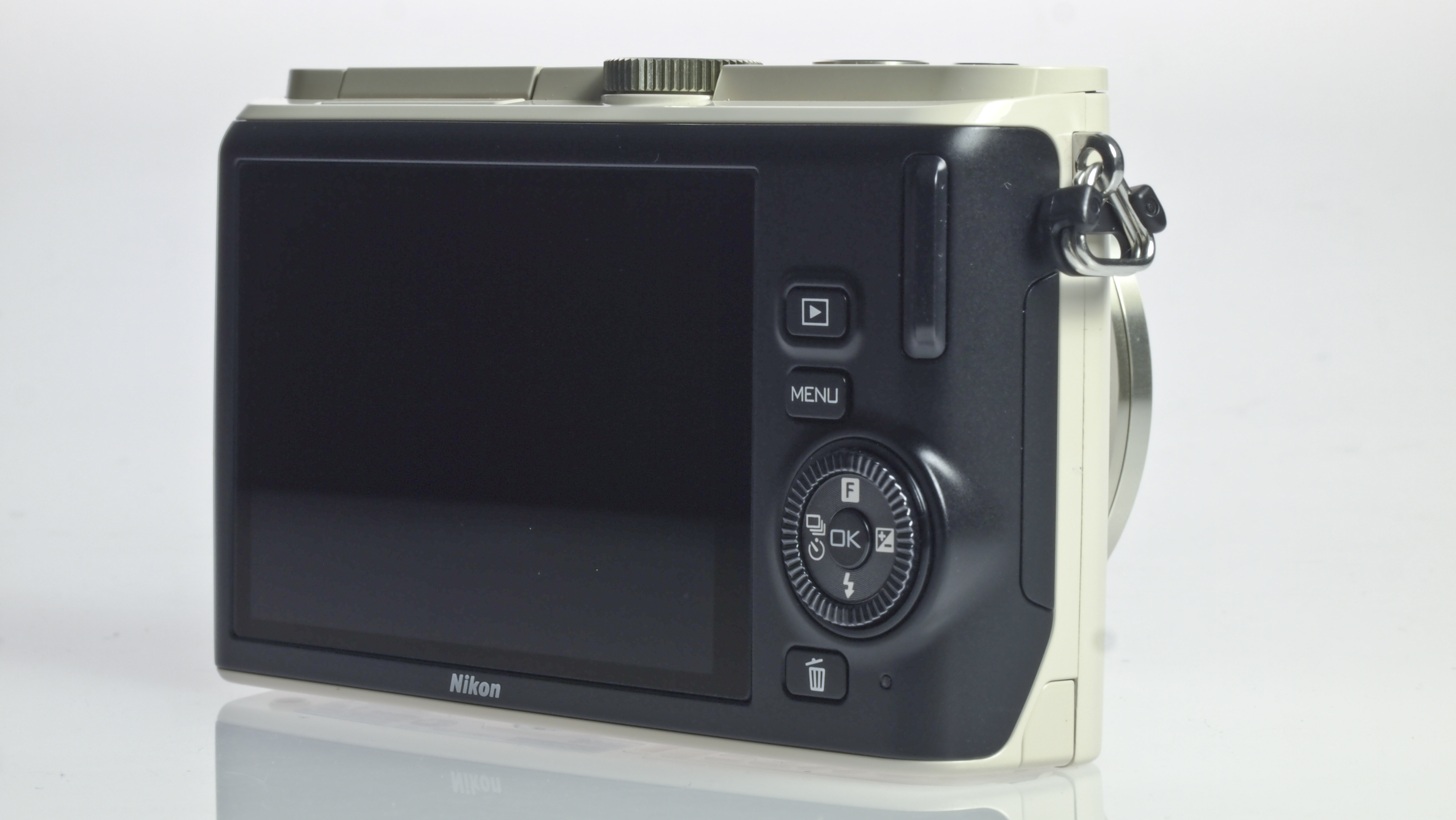Why you can trust TechRadar
Although the Nikon 1 J3 is smaller and lighter than the Nikon 1 J2, the design of the chassis itself is very similar. There's no grip on the front of the camera, though a small thumb rest on the back helps with purchase, especially when holding the CSC one-handed.
Nikon has decided to move the mode dial from the back of the camera to the top of the camera, which does make it slightly easier to use with your thumb than on the previous version. The J1 had no mode dial at all, so it's nice to see one continuing on the J range, giving quicker access to the different modes the camera offers.
Unlike the mode dial on the V2, however, P/A/S/M modes can't be accessed from the dial - presumably because the camera is aimed at a less advanced audience.

Instead, on this dial you can choose between fully automatic, Motion Snapshot, Smart Photo Selector and movie mode. There's also Creative Mode, which is where the semi-automatic and fully manual modes can be accessed from, as well as digital filters and Easy Panorama mode.
Like on other models, there are two ways to switch on the camera. First, there's a button on the top, but for grabbing those spur of the moment shots, the quickest way to activate it is to use the button on the side of the lens and twist it round to the side. This means the camera is ready to shoot as soon as it is switched on.
On the back of the camera there's been a bit of a switcharound with buttons, or how certain buttons work. Previously, a small switch near the top-right of the camera could be used to set aperture or shutter speed (when in the appropriate mode). Now, this must be done by scrolling the dial on the back of the camera.

There's no dedicated function button and instead a tap on the up arrow of the four-way directional pad is required. It does the same job though, enabling you to change between various options when in creative mode.
On the V2, a function button gives you quick access to key parameters, such as white balance and ISO. Unfortunately, there's no such option here, requiring a delve into the menu to make changes.
Other buttons, or functions accessed via the four way directional pad on the J3, include exposure compensation, a menu button, a playback button and a self-timer/drive mode option.

Unlike on the J2, there's no Display button for switching off shooting information for an uninterrupted composition screen - instead, again you need to delve into the menu to access this option, which can be a little frustrating.
The 73-point hybrid autofocus system that made its debut in the original Nikon 1 cameras has been maintained here. You can elect to have the camera choose an autofocus point for you, or for more flexibility, subject tracking and single point options are also available.
Once you've selected single point, hitting the OK button brings up the focus point selection, which you can then change via the arrow keys. It's a big shame that Nikon still hasn't incorporated a touchscreen into its Nikon 1 cameras, since it would make it much quicker and easier to set the autofocus point, and perhaps some of the key parameters in the menu too.

The Nikon 1 J3 has an inbuilt flash, which pops out of the top-left of the camera. The design has been changed from the J2, from a long stalk (which felt a little flimsy) to a new spring-loaded mechanism. This feels much more secure and less likely to accidentally be snapped off than that on its predecessor.
Also as on the Nikon 1 J2, a dedicated movie record button is found next to the shutter release on top of the Nikon 1 J3.
Handily, Nikon has made the decision to allow movie recording to be activated even when you're not in movie record mode - something that wasn't possible on the J2 and could be a little frustrating when trying to capture off-the-cuff moments.

Amy has been writing about cameras, photography and associated tech since 2009. Amy was once part of the photography testing team for Future Publishing working across TechRadar, Digital Camera, PhotoPlus, N Photo and Photography Week. For her photography, she has won awards and has been exhibited. She often partakes in unusual projects - including one intense year where she used a different camera every single day. Amy is currently the Features Editor at Amateur Photographer magazine, and in her increasingly little spare time works across a number of high-profile publications including Wired, Stuff, Digital Camera World, Expert Reviews, and just a little off-tangent, PetsRadar.

